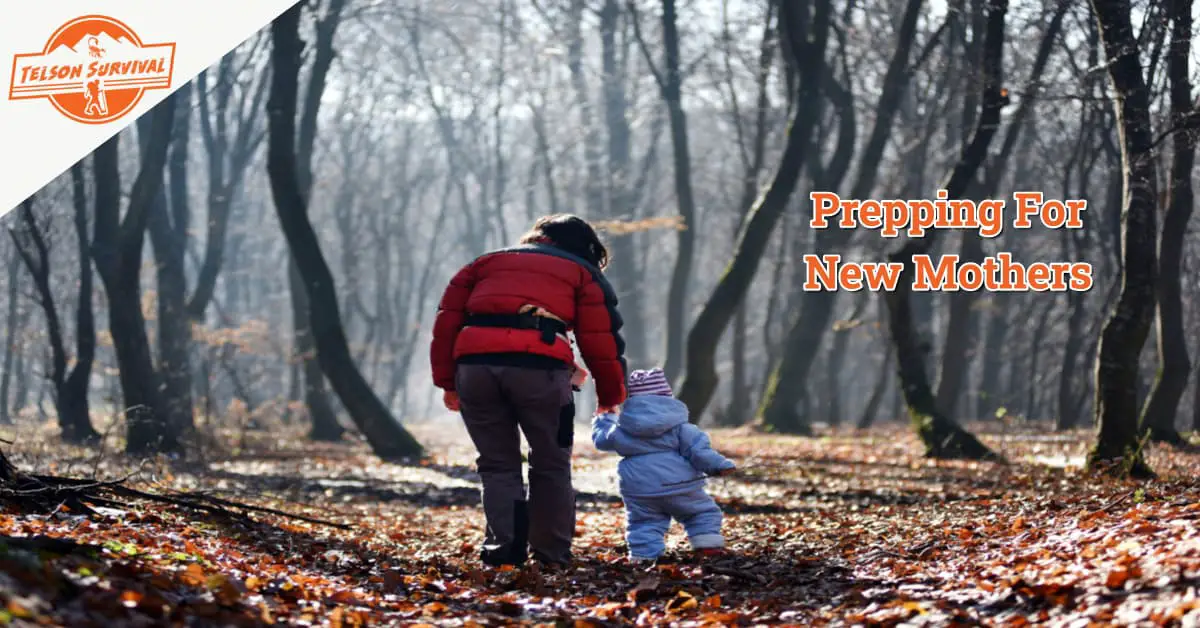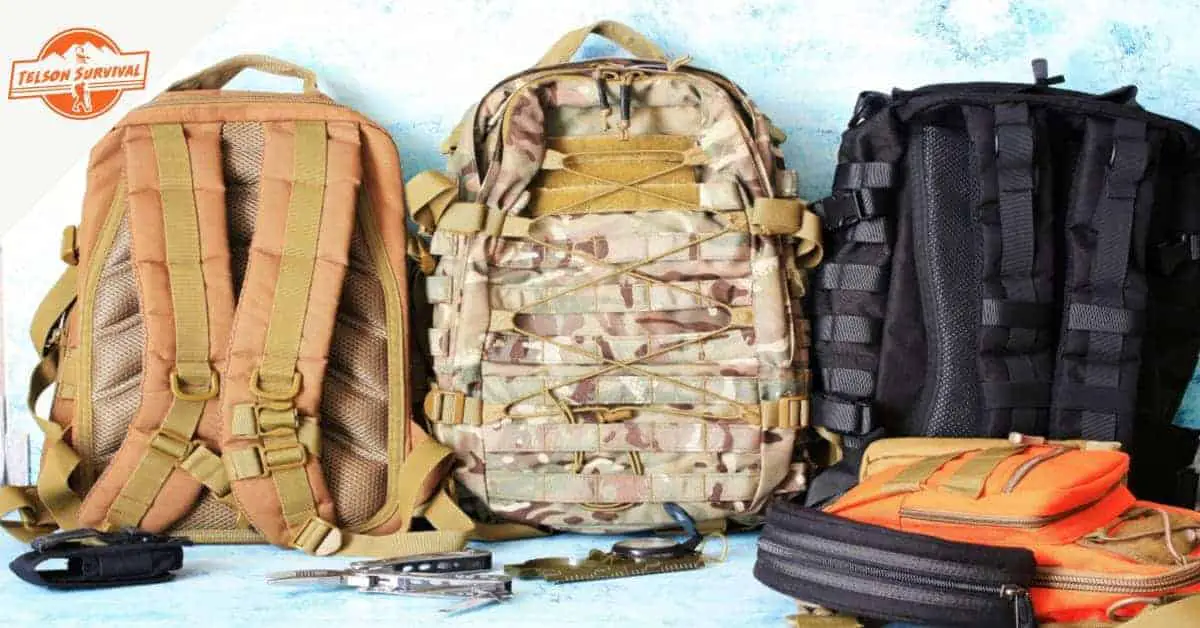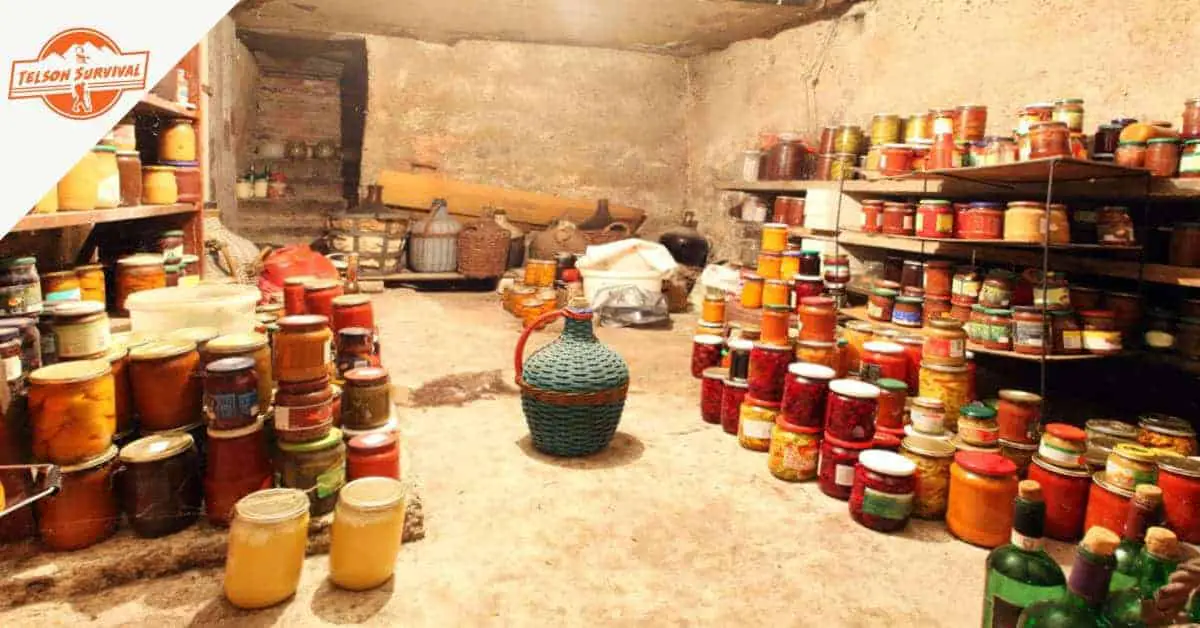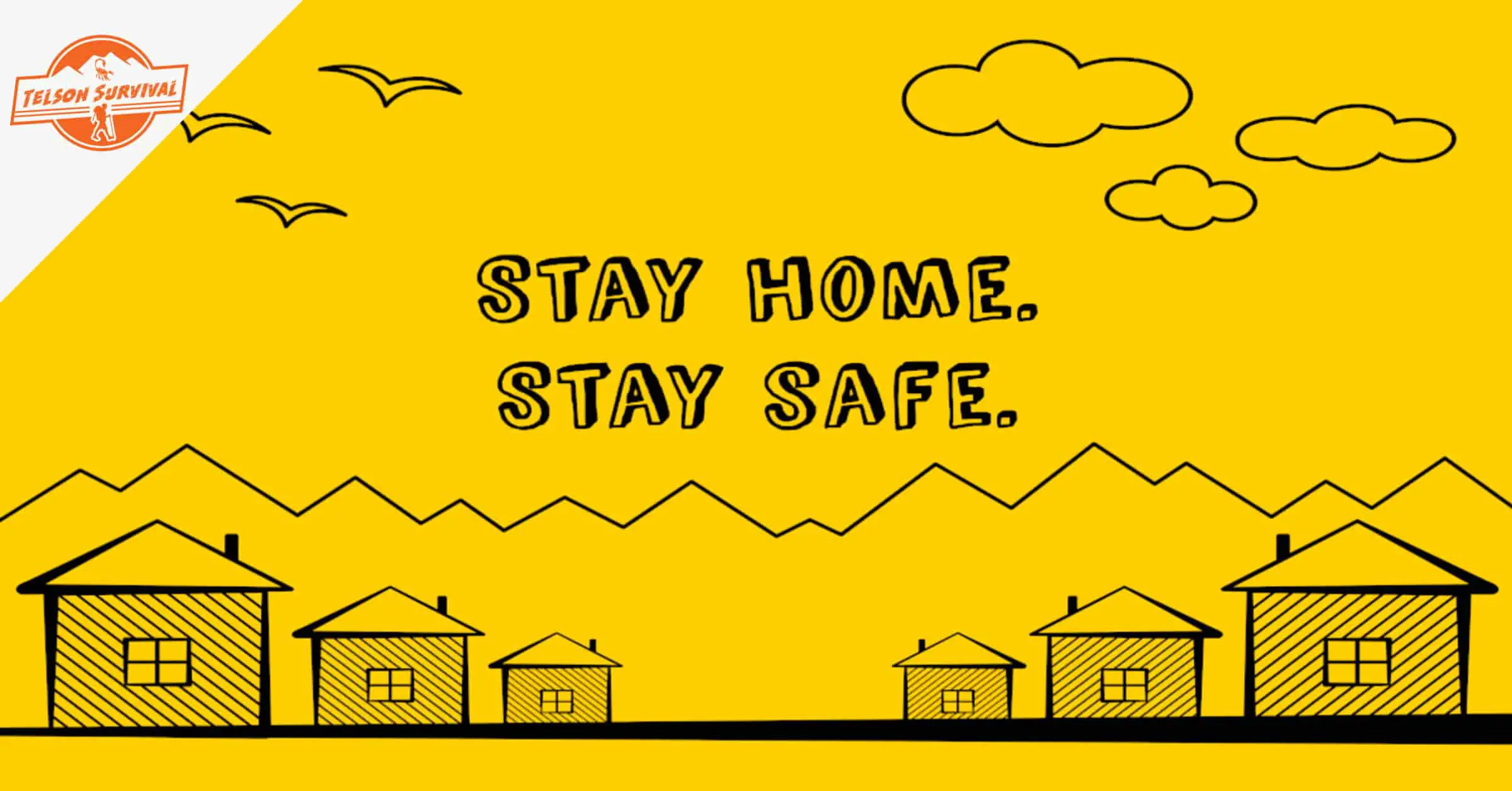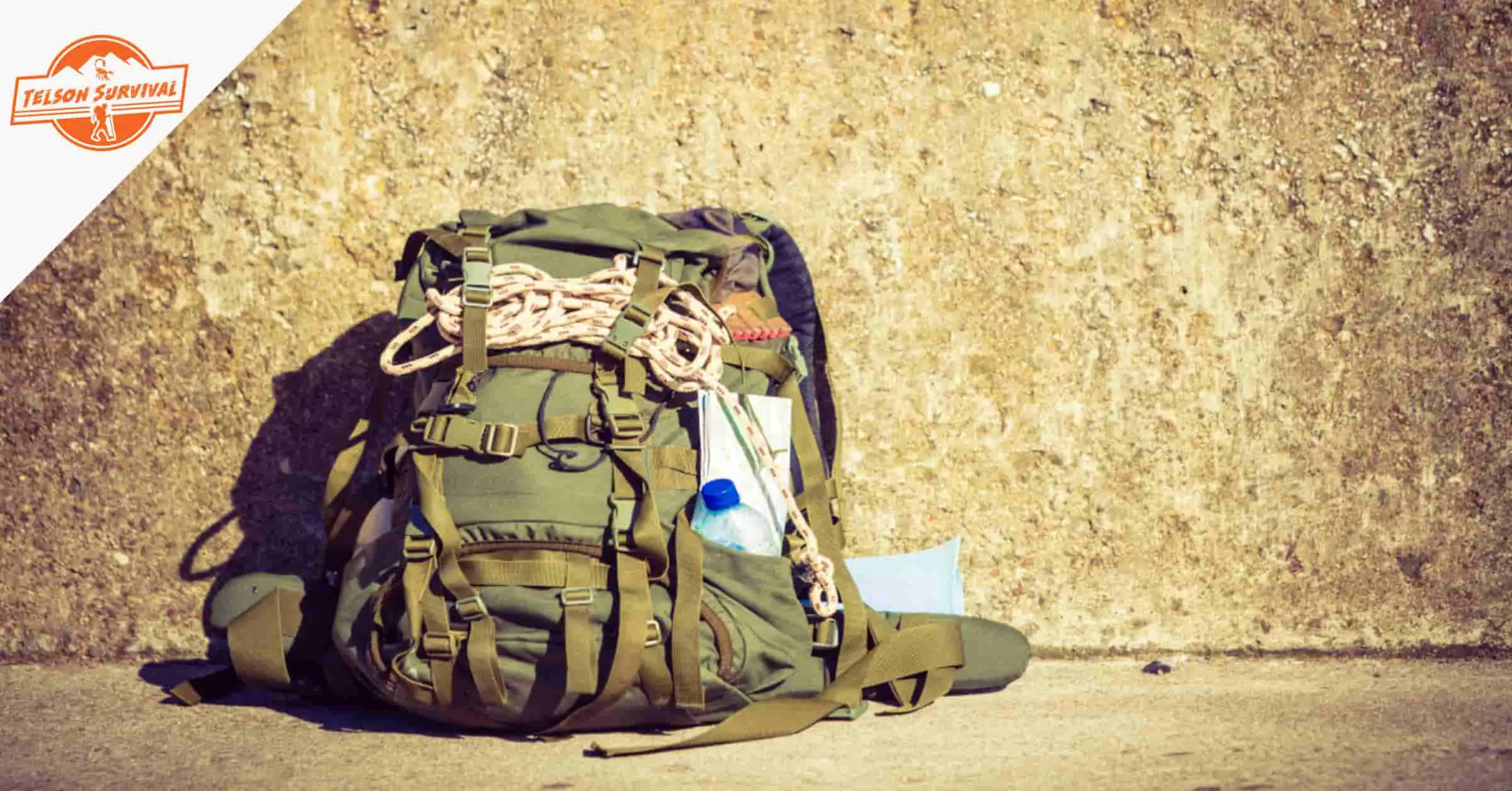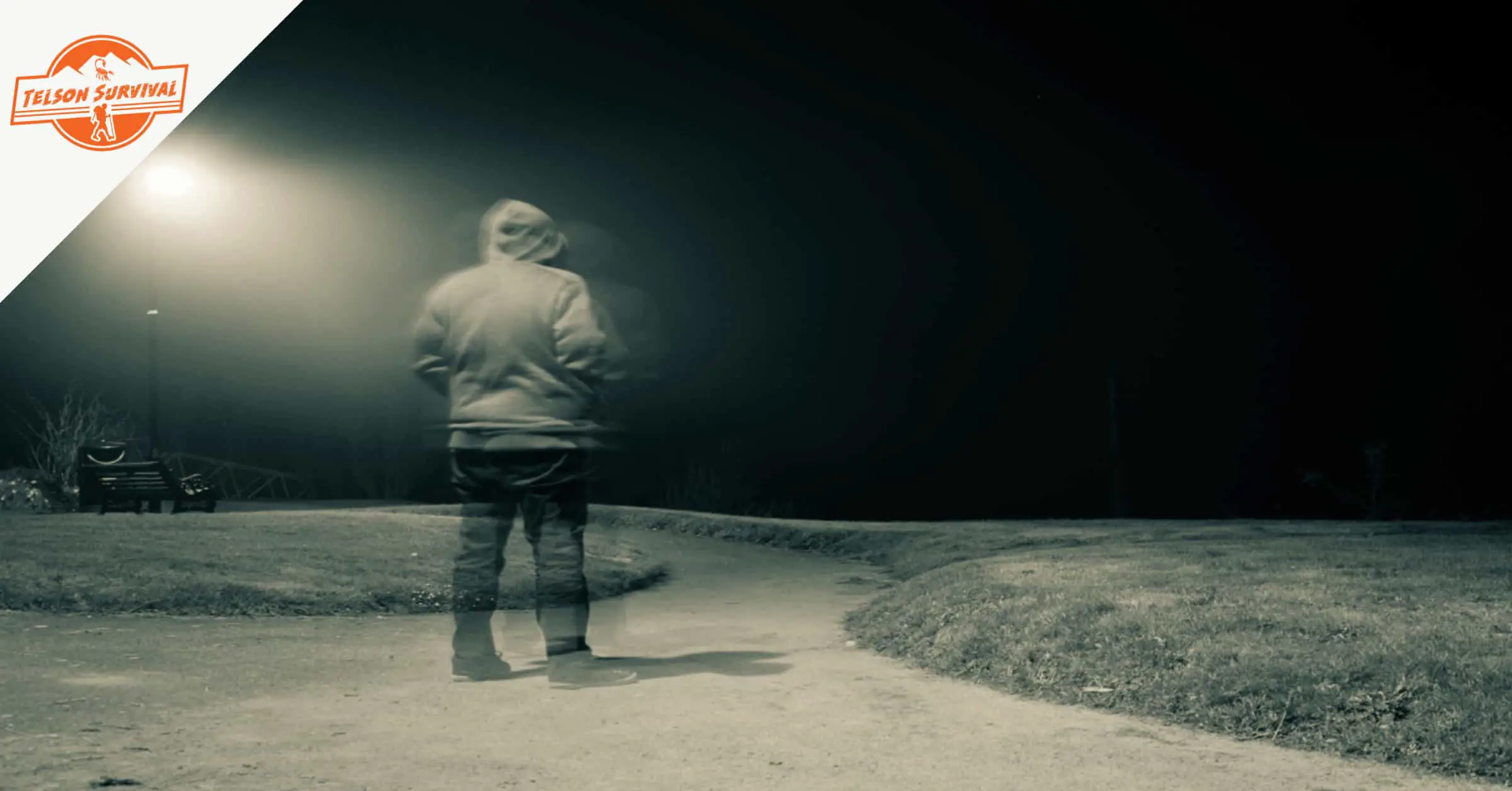Prepper families, we all know that having a baby changes everything. But have you thought about how it changes your prepping plan?
If you or your partner are expecting or have recently welcomed a little one into the family, you are most likely wondering what you need to do to be prepared for when SHTF. It’s important to know how to prep for babies and toddlers so that when an emergency happens, our entire existence is not thrown into chaos.
We can’t expect babies to learn survival skills. Physically, they can’t even take responsibility for their own mobility. Infants are helpless and completely dependent on adults for survival. So when the adults are in survival mode - how do we make sure the babies are still taken care of?
And what about a pregnant or nursing mother? Just like babies need special considerations, a woman who is pregnant or breastfeeding has certain needs that have to be taken into account when prepping.
In this guide to prepping for new mothers, we are going to talk about the special measures that should be taken when you have toddlers, newborns, and nursing or pregnant women in your family.
Being pregnant and then having a newborn that quickly grows into a toddler happens in the span of a few short years. But in those years, there are quickly evolving stages and phases that require their own special supplies and gear.
It is really important when prepping for emergencies that you plan ahead to anticipate the future developmental needs of your quickly growing baby. It is the only way to make sure you have everything necessary to keep your child happy and healthy during uncertain and chaotic times.
Prepping for SHTF While Pregnant
Being pregnant lasts less than a year. A healthy pregnancy can pass by in the blink of an eye (especially if you have other kids), and before you know it you’ll have a little newborn cradled in your arms.
It is scary to think about the possibility of an emergency situation happening while your body is growing a baby. But, as we preppers know, sh** can hit the fan at any time.
First off, if you are still early on in your pregnancy, congratulations. By learning how to prep for pregnant women early on, you are improving your chances of making it through any emergency.
Most of the advice for pregnant preppers is standard advice for every pregnant woman:
- Stay fit: Make sure to eat a healthy diet and stick to an exercise routine that will keep you and your growing baby healthy. This will increase your chances of surviving a bug out situation and handling physical and emotional stress.
- Get prenatal care: Seek out professional assistance for monitoring your pregnancy. A doctor or midwife will be able to alert you to any possible complications that may present themselves. They will educate you on any special preps you need to make considering your individual circumstances.
- Educate yourself: Do not count on being able to run to the doctor for every little thing. Take the time to learn about your body's natural processes and physiological needs. Know your limits and respect them! Many medicines, natural remedies, exercises, and even some foods are not appropriate for pregnant ladies. Do your research to prevent causing unnecessary complications in your pregnancy.
When it comes to stockpiling emergency supplies for a pregnant woman, here's what you need to keep in mind:
Food: Make sure you have enough of it in your food stockpile. Pregnant and lactating women will consume more calories than normal, about 300 - 500 additional calories per day are sufficient, depending on which trimester they are in and their activity level.
Multivitamins: Every pregnant woman usually takes a prenatal vitamin. Make sure to have a couple extra bottles spread out between your home emergency supplies, your bug out bag, and your get home bag.
Tip: Not every vitamin agrees with every woman, especially when it comes to iron supplements. Make sure you stock up on a vitamin that mama-to-be can take without any uncomfortable side effects.
Acetaminophen: Ibuprofen and aspirin are not recommended for pregnant women, so make sure to stock up on acetaminophen for fevers, aches, and general pain relief.
Birthing Supplies: Even if you are not planning on having a homebirth, babies come when they want. You need to be prepared to handle it. It’s actually surprising how little you will need to have a safe successful birth at home. Keep the following supplies on hand.
- An old plastic shower curtain or plastic mattress cover.
- Old sheets and bedding that can get bloody.
- Alcohol
- Soap and clean water
- Ice packs
- Postpartum pads
- Waxed string
- Scissors
That’s pretty much it. If you want to get fancy and spend a lot of money, you can certainly do so.
Feel free to invest in high quality shoes or boots for bugging out and special maternity clothing and gear. Anything you do to make a pregnant woman more comfortable in a stressful situation will be greatly appreciated.
But for many people, there is the small issue of a budget. If money is tight, we recommend that you prioritize investing in newborn and baby prepping supplies. Pregnancy lasts such a short amount of time, that you may risk investing in gear that you will never end up using.
Prepping with a Baby
When you are prepping for a baby, you should consider the different developmental stages that each child grows through and the unique material needs that each stage requires.
Newborns are babies that are typically under 2 months old. They are the easiest to prep for.
Infants are babies that range from about 2 months to around a year. There is an incredible range of developmental milestones that happen in this time that need to be taken into account when stockpiling gear and prepping.
Toddlers are babies that walk and are typically older than one year old. Babies can be considered toddlers up until around 4 years of age when they graduate to ¨little kid¨ status.
So, how do you prep for babies?
Prepping for Newborns
Newborns are the easiest to prep for and care for in an emergency. They basically need three things.
To be carried. To be fed. To be cleaned.
Carrying your Newborn
Carrying your newborn is easy because they still do not weigh a whole lot. Invest in a comfortable baby carrier. Chances are you will want to use this in your daily life, but in an emergency or bug out situation, it will be invaluable.
There are many styles of baby carriers available. You may discover that mom is more comfortable with one style and dad is more comfortable with another. It's a good idea that each person has their preferred style for maximum comfort.
- Wrap carriers are small, compact, and versatile. They adapt to each body and can continue to be used with your baby during each stage of growth.
- Backpack style carriers are a bit bulkier and are not quite as convenient for everyday use. They are, however, exceptionally useful for long distance travel by foot.
- Traditional baby carriers are practical as well. They are comfortable for both parents and baby. The only thing you need to be careful about is size and weight restrictions. Check the manufacturer's label to make sure you are not using a carrier that is too large or too small for your baby.
Last update on 2024-10-23 / Affiliate Links / Images from Amazon Product Advertising API
Feeding your Newborn
When a baby is only a couple of months old, they are not yet eating solid foods. Exclusive breastfeeding, as long as the mother is well fed, is the easiest and most practical way to keep your baby fat and happy.
Breastfeeding is not always possible though, whether through physiological reasons, personal choice, or emergency circumstances. If this is the case, you will need to make sure that you have stocked up a substantial supply of baby formula and sterilized water.
Here’s a prepping tip: Hold off on stockpiling formula until you know which formula agrees with your baby. Babies often have food allergies or sensitivities that cause digestive issues. It would be a huge waste of money to end up with a mountain of formula that your baby can’t eat.
For your home stockpile, consider purchasing gallons of sealed, sterilized water for mixing with the formula. For a bug out bag, small 8oz bottles of water may be more practical.
Do the math on how much water you need daily to mix your baby's formula. Multiply that number by three. This is how much water you should carry in your bug out bag. Multiply that number by 90 to stockpile a three month supply of water, exclusively for feeding your baby.
If you live in an area where you have abundant water resources, it may make more sense to invest in a trustworthy water filter.
Keeping Your Newborn Clean
Newborns will poop, pee, and spit up all over themselves daily. That won't stop when SHTF. When it comes to keeping your baby clean, you will want to think about their diapers, their clothes, and their bathing needs.
Baby clothes: Prepare a three-day supply of clothing for your newborn baby's bug out bag. This should include at least four changes of clothing per day. Remember, babies can blow out their diapers with a massive poop (especially breastfed babies) five minutes after you change them.
Keep a variety of clothing handy and change it out as the baby grows and the weather changes. Stockpile baby detergent in your household supplies. Consider placing a bar of solid laundry detergent in your BOB so you can wash your baby's clothing on the go.
Baby diapers: Diapering your baby is a fairly complicated matter when it comes to emergency situations. When SHTF, if you have to bug out, it will be really difficult to carry a whole package of disposable diapers in your BOB. If you are bugging in, it may be difficult to get to a grocery store to resupply.
This is why nearly every prepper mother recommends that you invest in a supply of cloth diapers. But here's the thing, if you are going to use disposable diapers and all of the sudden you are forced by circumstance to switch to cloth diapers, you are going to be miserable. Cloth diapering takes practice.
Here’s a prepping tip: Consider using cloth diapers in your daily life so you get the hang of using them. Learn to put them on your baby properly, and how to keep a routine for cleaning them. Many people start out with disposable diapers when their babies are very recently born, and then gradually work cloth diapers into their routine. You will be shocked at how much money you can save by using just a few cloth diapers daily. And if SHTF you won't be overwhelmed by having to adapt.
To keep your diapers clean, if you are at home, leave them soaking in lightly soapy water until you get a chance to wash them out. Shake off any solids into the toilet and prewash the diaper before letting it soak. Wash your diapers at least once a day.
In your BOB pack a stash of at least ten simple cotton cloth diapers. These take up the least amount of space and dry quickly when air drying. You will also want to stash at least 4 waterproof diaper covers to keep your baby's clothes dry. You can also pack a small stash (6 - 8) of disposable diapers.
Last update on 2024-10-23 / Affiliate Links / Images from Amazon Product Advertising API
Here’s another prepping tip: In your BOB, you can skip the cloth diaper covers to save space (and money). When you use your disposable diapers, carefully cut out the soiled filling and dispose of it. Wash out the plastic outer cover of the disposable diaper. These make very effective covers for cloth diapers, which can be easily fitted into the space where the cellulose filling used to be.
As for baby wipes, disposable wipes are great for your home emergency stockpile. For your bug out bag, invest in soft cotton reusable wipes. These can be washed out, hung up to dry, and reused time and again with minimal expense. Plus, they will never run out.
Bathing your Newborn
When it comes to full-body bathing of your baby, the prepper mom can be satisfied with just a little extra preparation. For bugging in, make a plan to have sufficient water for bathing your baby. Depending on where you live, it may be necessary to store a barrel of water exclusively for bathing and washing needs.
When it comes to soap, every mother has their preferred products to keep their baby fresh and clean. Just like with food, some babies have very sensitive skin and one soap or shampoo may cause them an allergic reaction whereas a different one won't. Once you know which soap works best on your baby's body, purchase an extra supply for your stockpile and a travel size for your bug out bag.
Keeping your baby clean while bugging out may be more complicated. Never bathe your newborn in water that may be contaminated. Take extreme caution that they do not swallow any water you use for bathing.
Prepping for Infants
As your baby grows, so do the challenges of prepping for them. All of the advice and suggestions we offered for prepping with your newborn remain relevant and valid, but now you have a few new considerations to keep in mind.
- Your baby will eventually start eating solid foods and you need to be able to feed them.
- Your baby may become too heavy to carry for long distances.
- Your baby will be more vocal and will need to be entertained.
Luckily, you can cover these bases with a few easy preps.
It's not actually a law that your baby needs specialized baby food that comes in a sealed jar. If that is your style, be sure to add a variety of baby foods to your survival food stockpile.
If you want to avoid a costly investment that may never get used, consider investing instead in a variety of foods that the entire family can enjoy together with your baby.
Stockpile oatmeal, barley, rice, and cream of wheat. These can be cooked for everyone and a small portion can be prepared for your infant.
In fact, your baby can eat exactly the same foods that you do. Avoid foods that are overly processed and laden with salt and sugar and make sure your survival food stockpile is rich in freeze dried and frozen staples, dehydrated fruits and veggies, and canned foods from your survival garden.
Invest in a simple hand-cranked baby food grinder to help make sure your baby's food is the texture and consistency that they will eat. Be sure to follow standard practices when it comes to introducing new foods to your baby.
Last update on 2024-10-23 / Affiliate Links / Images from Amazon Product Advertising API
As your baby grows, bugging out will become more of a challenge. Consider investing in a high quality convertible bike cart. Obviously, if you need to bug out on a bike, it is easier to take your baby with you. But even on foot, these convertible units turn into hardy strollers that can handle rough terrain. They are also roomy, providing storage space for your baby's bug out supplies. With their protective cover or sunscreen, your baby will be safe from the hot sun, cold, or rain.
Last update on 2024-10-23 / Affiliate Links / Images from Amazon Product Advertising API
And keeping your baby entertained? Well, that may turn into the biggest challenge of them all. Keep a developmentally appropriate toy or two in your bug out bag. Make sure that it is a toy they have never seen before. When the moment comes, the novelty of the new toy will hold their attention for quite some time.
For bugging in, do the same. Keep a stash of never before seen toys hidden away for critical moments when you need your baby to be distracted. To help keep them quiet, try a special snack, such as a sucker or dried fruit snacks (something they do not have every day.)
Some parents never give their children a pacifier while others cannot imagine life without one. The fact of the matter is that a pacifier can be invaluable for keeping your young baby quiet. Stock an extra pacifier or two in your emergency supplies and in your baby’s bug out bag.
Prepping with Toddlers
If you have followed our advice for prepping with infants and babies, you should already be well prepared for any disaster by the time your child is a toddler.
But remember, as your baby grows, their needs change. Here are the things that you will want to keep in mind when prepping for toddlers.
Feeding your Toddler when SHTF
Chances are your child has already graduated from formula and is eating a wide variety of foods. In your toddler’s bug out bag, make sure to include their favorite high calorie snacks.
For your emergency food stockpile, be sure to have your toddler’s favorite snacks and foods in abundance. When they are stressed out, their favorite treat can work wonders for helping them maintain a positive attitude and good mood. These foods can also be used as rewards for cooperation.
Diapering your Toddler when SHTF
Here’s something you may not have thought about… instead of stockpiling diapers, why not simply try early potty training? There are many places around the world where babies do not normally wear diapers after 18 months of age or two years old. The sooner you can get your child out of diapers, the better.
That being said, if you have your toddler potty trained, be fully prepared for a certain amount of back peddling when SHTF. A toddler may show their stress by wetting their pants or the bed at night. Always keep a backup supply of pull-ups or cloth diapers in your emergency supplies.
Bugging Out with your Toddler
By this time it will be very challenging to bug out on foot with your toddler. They are too little to walk far on their own yet too large to be carried over long distances. You will definitely want to invest in a heavy duty durable stroller or bike cart if you haven’t already. At this stage, it may be most practical to plan on bugging in or bugging out by bike.
Essential Items for Prepping Babies and Toddlers
Here’s a handy checklist for you to work with when prepping for your babies and toddlers.
- Back up formula
- Sterilized water
- Baby carrier
- 10 cloth diapers
- 4 diaper covers
- Cloth baby wipes
- Disposable baby wipes
- Baby soap or shampoo
- Back up pacifier
- Extra weather appropriate clothing of all sizes
- Baby food mill
- Heavy duty stroller or bike trailer
- Selection of new toys
- Child’s favorite snacks or special foods
Essential Items for Prepping Pregnant Women
Here’s a recap in the form of a checklist:
- Multivitamin
- Extra ration of food daily
- Birthing supplies
Should You Bug Out or Bug In if You Have a Baby?
The question of whether you should bug out with babies when SHTF is a difficult one to answer. The circumstances of each emergency situation need to be evaluated individually and the best decision for your family will have to be made in the moment.
It is preferable to hunker down and bug in with your baby, if possible. Moving an infant or small toddler in an emergency situation may expose them to unnecessary risk. If you have your home properly prepared for bugging in (ample food, water, and other emergency supplies) then that may be your best bet.
Certain circumstances, however, may obligate you to bug out. Depending on what natural disasters or emergency situations are most likely to happen in the area that you live, evacuation may be your safest bet. Having well established emergency evacuation plans and bug out bags ready to go a must for every prepper. Always heed evacuation orders. Never wait until the last minute to move yourself and your baby out of danger. If you can bug out in your car, do it.
Prepping With Babies And Toddlers Recapp
Prepping for new mothers and babies does require some special consideration, but is less complicated than one might think. When it comes to prepping for pregnancy, newborns, and toddlers, one need only use a little common sense.
Stock extra supplies of what you already use. Wait until you know what agrees with the baby before making a large investment in survival supplies. Don’t be afraid to invest in high quality gear that will see you through every stage of your baby's growth.
With a little foresight and planning, you can easily organize the preps you need to be prepared for any emergency whether you are pregnant, with a newborn, your infant, or your toddler

